Padraig Kehoe, Enniscorthy,
Wexford

Padraig applying a head spray to his winter oats this week.
It has been a very wet month in Enniscorthy, with over 150mm of rainfall.
Soil moisture is more than replenished and if it remained dry from now to harvest, crops would likely be OK.
Padraig now has a backlog of spraying to get through and has to pick his fields carefully to avoid marking the tramlines.
It has also been a slow month for crop growth but things have begun to move over the past week, he says.
His spring barley crops are uneven in places and appear to have suffered some damage from leather jackets. At the four-leaf stage, the crops received Axial Pro at 0.6l/ha. He is now carrying out the crops’ T1 fungicide and main herbicide application consisting of Galaxy (1l/ha), Cameo (49g/ha) Comet (0.7l/ha) and Decoy (0.6l/ha).
Padraig’s spring beans are coming along, although are behind when compared to last year. There is some notching evident on the leaf but not enough to justify an insecticide.
T2 fungicide
He is halfway through his T2 fungicide on winter wheat. This year he is applying either Revystar (1.4l/ha) or Peacock (Inatreq at 1.8l/ha) along with Pontoon (0.9l/ha) as well as Magnitech (1.5l/ha).
He says that Septoria is present in the lower canopy but hasn’t moved up the leaves yet.
The panicles are emerging on his winter oats and they are now due their final fungicide of Elatus Era (0.8l/ha) as well as Mastercrop K (1.7l/ha). So far the crop remains really clean. Padraig’s hybrid winter rye crops are looking good and last week received a head spray of Decoy (0.6l/ha) and Comet (0.7l/ha).
He says the crop isn’t as high as expected so he questions if his PGR regime was too rigorous considering the harsh weather, saying: “This year really is a learning year for rye.”
Padraig says he intends on chopping all of his oat straw and some awkward fields of barley. The Straw Incorporation Measure has allowed him to increase his area of chopped straw but he still thinks he will have ample supplies for his customers.
Iain McMordie, Downpatrick,
Down
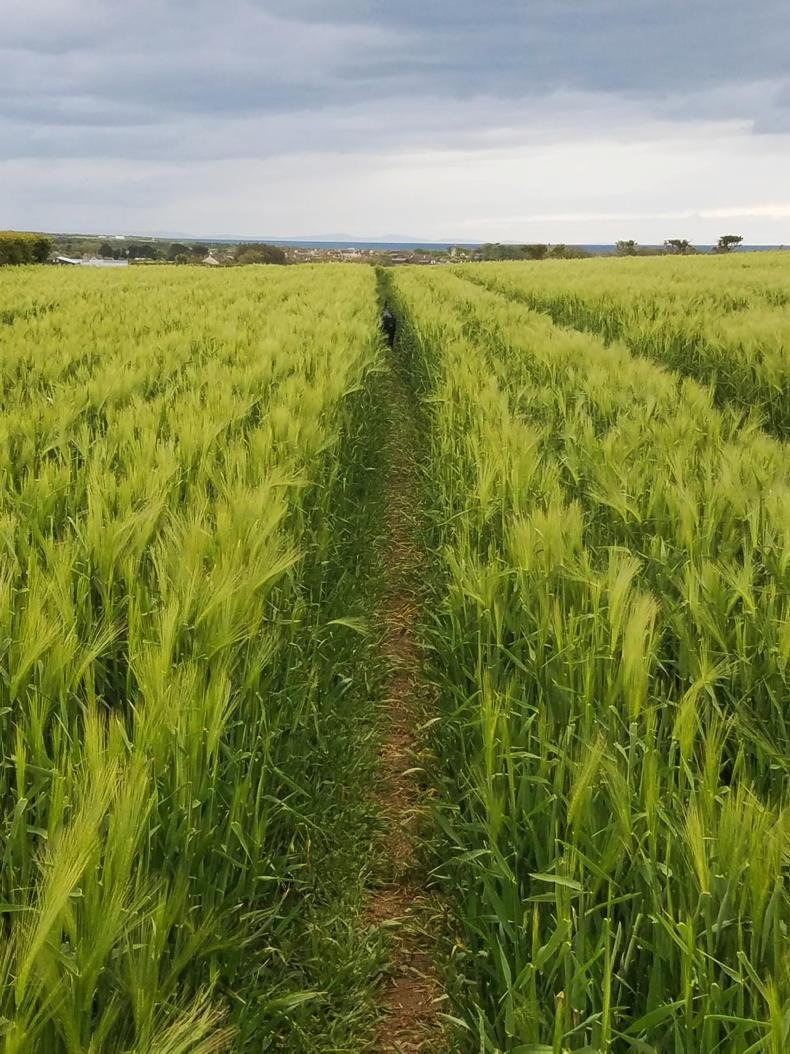
Iain's winter barley recieved a holding spray this week. Pictured is the background town of Killough, with the hills of the Isle of Man in the far distance.
Some 72mm of rain has fallen in Downpatrick over the past month which has been ideal for crops, says Iain.
Ground conditions are still very good and travelling isn’t an issue.
He applied a holding spray to his winter barley this week consisting of Mobius (0.3l/ha). The crop received a T2 head spray three weeks ago which consisted of Arazona (1l/ha) and Siltra (0.5l/ha).
However, since then, more heads have emerged which he feels needed a top-up fungicide. In general, however, his crops are very clean.
His winter wheat is rich blue-green in colour and with the flag leaf now fully emerged, is due its T2 this week. He thinks the cool, dry weather earlier in the season has contributed to the low disease pressure in the crop. His winter oilseed rape is still looking well but is beginning to lose petals.
Spring crops
Iain has sent a sample of his spring beans for a tissue test and depending on the results, the crop will likely receive boron and manganese along with an application of Follicur (1l/ha).
His spring oat crops are currently around GS30-31 and received a PGR last week of Adjust (1l/ha).
He will apply the crop’s weed spray this week which will consist of either Inca plus Starane, Galaxy plus CMPP or Starane XL plus CMPP. The weed sprays depend on specific weed pressure in each block of oats.
Iain takes weed control extremely seriously on the farm. For example, he has zero tolerance for bromes and uses an integrated approach including spring and winter cropping, stale seedbeds, herbicides and creating a sterile strip around fields to control and prevent the weed. He also hand-rogues where possible and cleans the combine and baler thoroughly if harvesting a crop infected with brome.
Brome became a problem for Iain but through using these management techniques, he was able to get it under control.
He has adequate haylage in stock this year so doesn’t plan on making any this year.
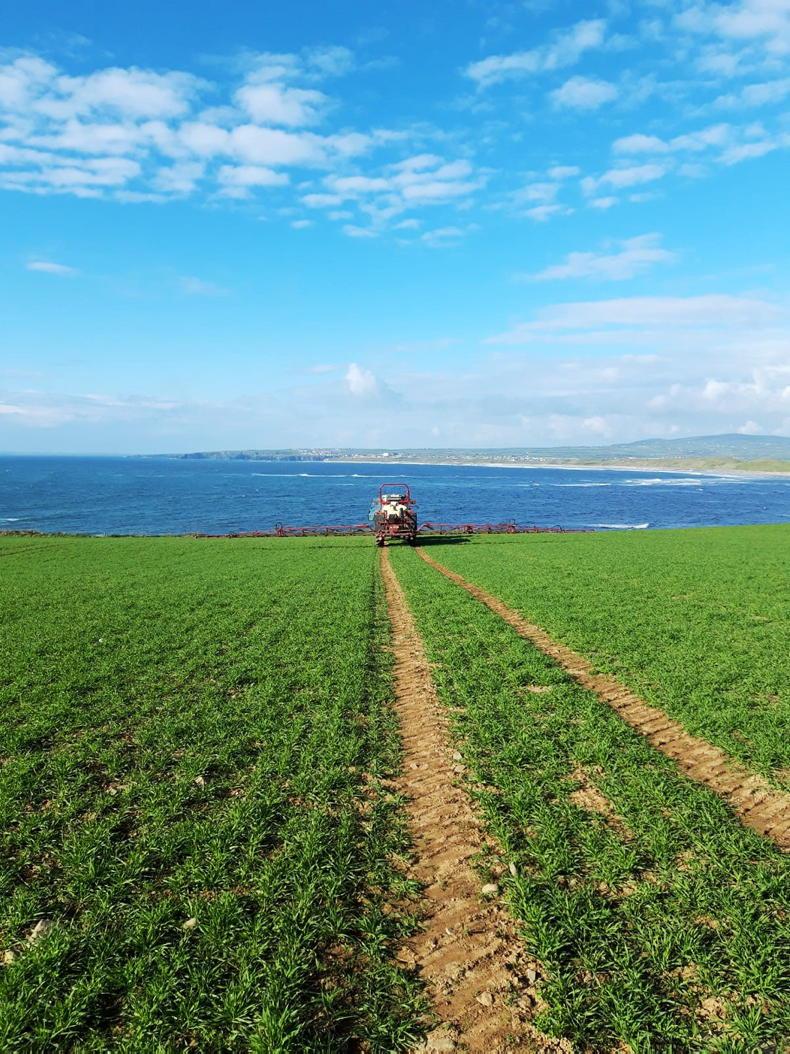
Con applying a herbicide onto his Gangway spring barley last week.
There has been a lot of rain in Kerry, says Con.
He was able to take his first cut of silage four weeks ago and is happy he did as the weather has been very broken since. Around 97mm of rain has fallen on his farm over the past 30 days.
He was able to get slurry out on the silage ground as well as nitrogen in preparation for the second cut.
He also applied 2,000g/ac of slurry on to his spring oat and wheat crops using an umbilical system.
Con says the cooler than average weather has slowed the development of his spring barley crops, which are looking just OK. Warmer weather over the past seven days has helped the crops, however. He applied a manganese, copper and zinc trace elements spray last week. The crop also received a herbicide application of Ergon (40g/ha), Binder (0.5l/ha) as well as Avena Nua (0.6l/ha) and an insecticide last week.
His spring wheat and oat crops, on the other hand, are doing much better. The crops received the same weed control programme as his spring barley last week.
Winter crops
The flag leaf has emerged on Con’s winter wheat and was recently topped up with nitrogen.
The crop’s T1 spray consisted of Ascra Expro and it is now due its T2 this week. His T2 will consist of Librax at 1.7l/ha.
His hybrid winter rye has fully headed out and received a final spray of Globaztar (1l/ha) and Jade (1l/ha).
Con held off applying a final top dressing as he thinks the crop has received enough nitrogen. The crop stands at around 1.3m and has received four PGR sprays. It will either be wholecropped or crimped.
Finally, his maize is coming along but some of the plastic was blown off in high winds earlier this month.
Con questions how effective the herbicide, which was applied at the time of drilling, will be as conditions were so dry.
He will remove the plastic and apply a follow-up herbicide in places if needed.

Padraig Kehoe, Enniscorthy,
Wexford

Padraig applying a head spray to his winter oats this week.
It has been a very wet month in Enniscorthy, with over 150mm of rainfall.
Soil moisture is more than replenished and if it remained dry from now to harvest, crops would likely be OK.
Padraig now has a backlog of spraying to get through and has to pick his fields carefully to avoid marking the tramlines.
It has also been a slow month for crop growth but things have begun to move over the past week, he says.
His spring barley crops are uneven in places and appear to have suffered some damage from leather jackets. At the four-leaf stage, the crops received Axial Pro at 0.6l/ha. He is now carrying out the crops’ T1 fungicide and main herbicide application consisting of Galaxy (1l/ha), Cameo (49g/ha) Comet (0.7l/ha) and Decoy (0.6l/ha).
Padraig’s spring beans are coming along, although are behind when compared to last year. There is some notching evident on the leaf but not enough to justify an insecticide.
T2 fungicide
He is halfway through his T2 fungicide on winter wheat. This year he is applying either Revystar (1.4l/ha) or Peacock (Inatreq at 1.8l/ha) along with Pontoon (0.9l/ha) as well as Magnitech (1.5l/ha).
He says that Septoria is present in the lower canopy but hasn’t moved up the leaves yet.
The panicles are emerging on his winter oats and they are now due their final fungicide of Elatus Era (0.8l/ha) as well as Mastercrop K (1.7l/ha). So far the crop remains really clean. Padraig’s hybrid winter rye crops are looking good and last week received a head spray of Decoy (0.6l/ha) and Comet (0.7l/ha).
He says the crop isn’t as high as expected so he questions if his PGR regime was too rigorous considering the harsh weather, saying: “This year really is a learning year for rye.”
Padraig says he intends on chopping all of his oat straw and some awkward fields of barley. The Straw Incorporation Measure has allowed him to increase his area of chopped straw but he still thinks he will have ample supplies for his customers.
Iain McMordie, Downpatrick,
Down

Iain's winter barley recieved a holding spray this week. Pictured is the background town of Killough, with the hills of the Isle of Man in the far distance.
Some 72mm of rain has fallen in Downpatrick over the past month which has been ideal for crops, says Iain.
Ground conditions are still very good and travelling isn’t an issue.
He applied a holding spray to his winter barley this week consisting of Mobius (0.3l/ha). The crop received a T2 head spray three weeks ago which consisted of Arazona (1l/ha) and Siltra (0.5l/ha).
However, since then, more heads have emerged which he feels needed a top-up fungicide. In general, however, his crops are very clean.
His winter wheat is rich blue-green in colour and with the flag leaf now fully emerged, is due its T2 this week. He thinks the cool, dry weather earlier in the season has contributed to the low disease pressure in the crop. His winter oilseed rape is still looking well but is beginning to lose petals.
Spring crops
Iain has sent a sample of his spring beans for a tissue test and depending on the results, the crop will likely receive boron and manganese along with an application of Follicur (1l/ha).
His spring oat crops are currently around GS30-31 and received a PGR last week of Adjust (1l/ha).
He will apply the crop’s weed spray this week which will consist of either Inca plus Starane, Galaxy plus CMPP or Starane XL plus CMPP. The weed sprays depend on specific weed pressure in each block of oats.
Iain takes weed control extremely seriously on the farm. For example, he has zero tolerance for bromes and uses an integrated approach including spring and winter cropping, stale seedbeds, herbicides and creating a sterile strip around fields to control and prevent the weed. He also hand-rogues where possible and cleans the combine and baler thoroughly if harvesting a crop infected with brome.
Brome became a problem for Iain but through using these management techniques, he was able to get it under control.
He has adequate haylage in stock this year so doesn’t plan on making any this year.

Con applying a herbicide onto his Gangway spring barley last week.
There has been a lot of rain in Kerry, says Con.
He was able to take his first cut of silage four weeks ago and is happy he did as the weather has been very broken since. Around 97mm of rain has fallen on his farm over the past 30 days.
He was able to get slurry out on the silage ground as well as nitrogen in preparation for the second cut.
He also applied 2,000g/ac of slurry on to his spring oat and wheat crops using an umbilical system.
Con says the cooler than average weather has slowed the development of his spring barley crops, which are looking just OK. Warmer weather over the past seven days has helped the crops, however. He applied a manganese, copper and zinc trace elements spray last week. The crop also received a herbicide application of Ergon (40g/ha), Binder (0.5l/ha) as well as Avena Nua (0.6l/ha) and an insecticide last week.
His spring wheat and oat crops, on the other hand, are doing much better. The crops received the same weed control programme as his spring barley last week.
Winter crops
The flag leaf has emerged on Con’s winter wheat and was recently topped up with nitrogen.
The crop’s T1 spray consisted of Ascra Expro and it is now due its T2 this week. His T2 will consist of Librax at 1.7l/ha.
His hybrid winter rye has fully headed out and received a final spray of Globaztar (1l/ha) and Jade (1l/ha).
Con held off applying a final top dressing as he thinks the crop has received enough nitrogen. The crop stands at around 1.3m and has received four PGR sprays. It will either be wholecropped or crimped.
Finally, his maize is coming along but some of the plastic was blown off in high winds earlier this month.
Con questions how effective the herbicide, which was applied at the time of drilling, will be as conditions were so dry.
He will remove the plastic and apply a follow-up herbicide in places if needed.









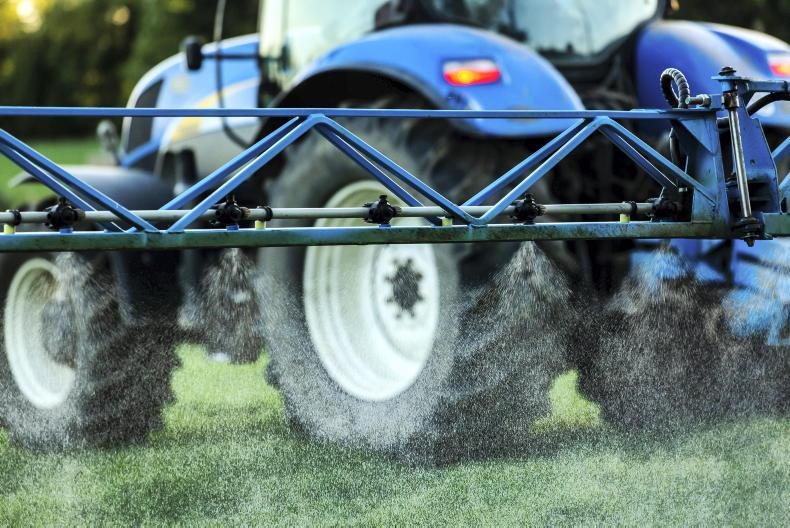
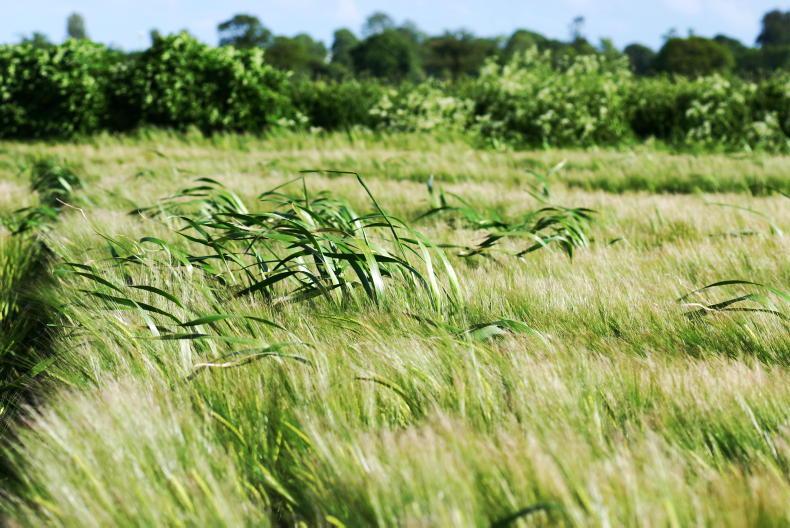
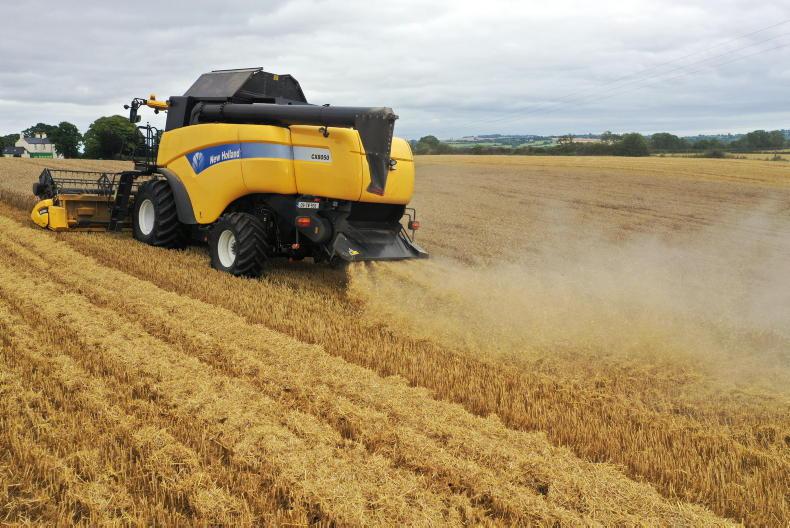
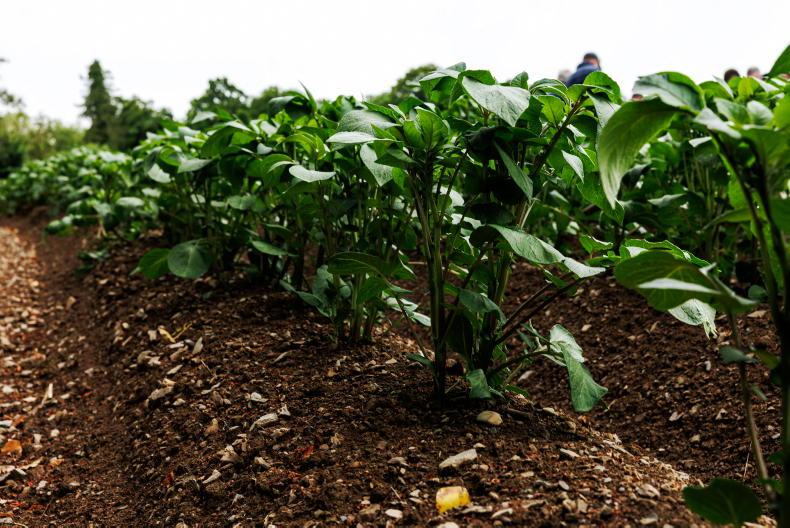
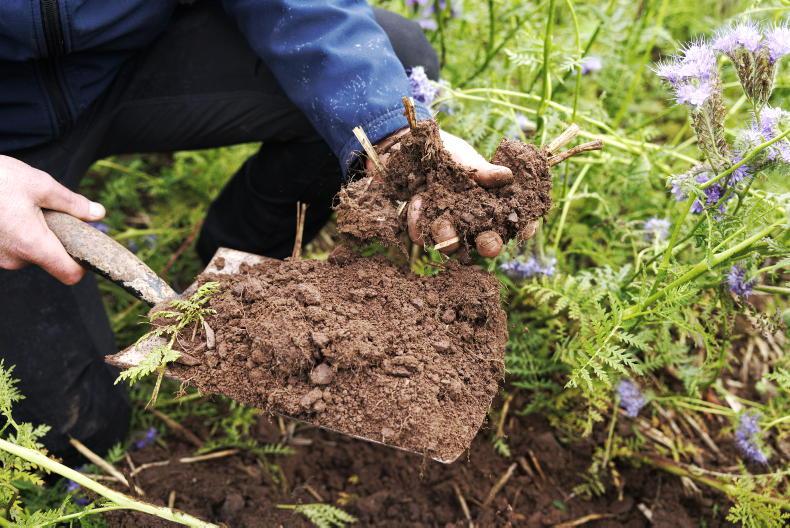
SHARING OPTIONS